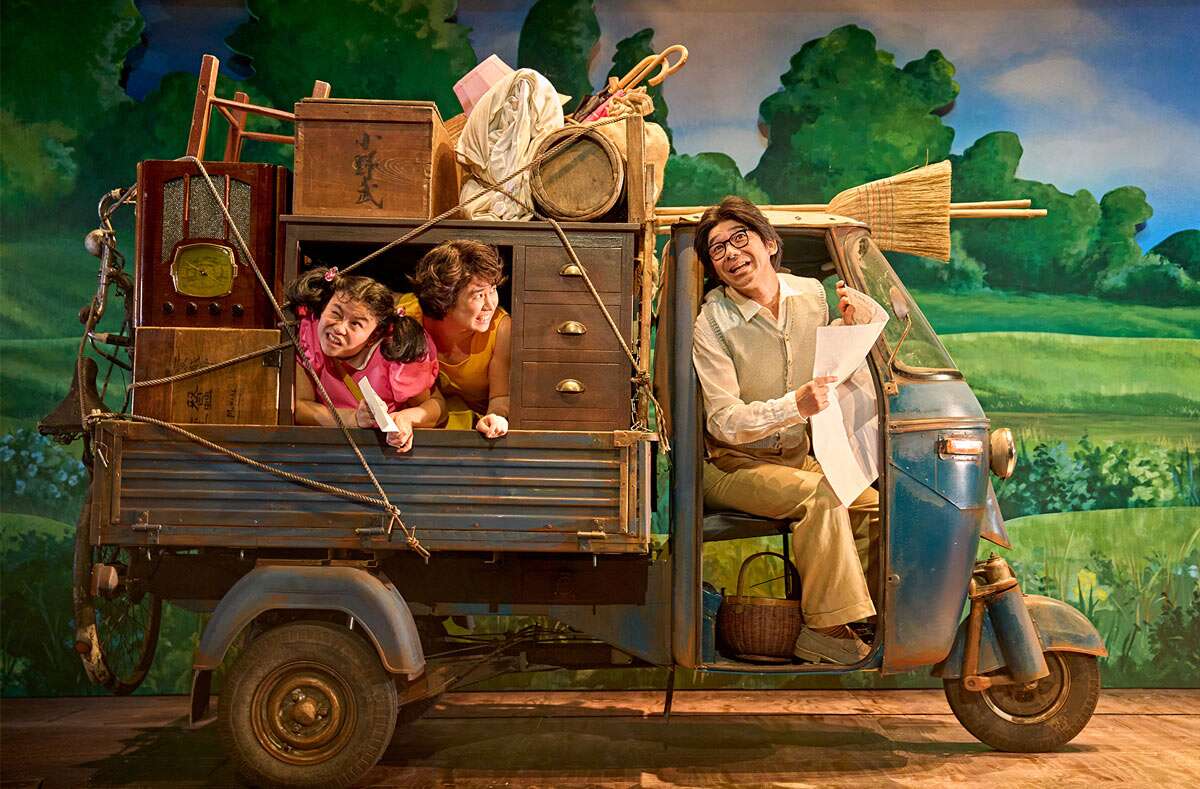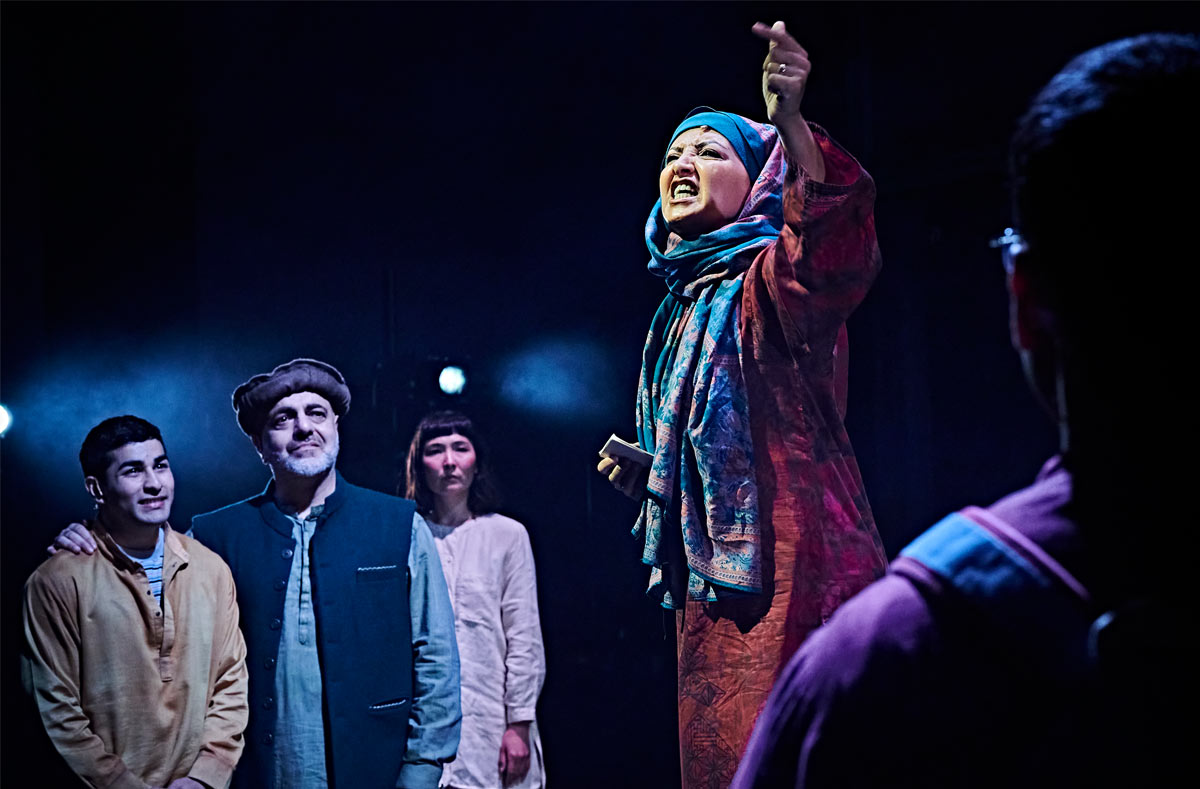Hisaishi wrote the music for the original 1988 animated film which tells the story of two young girls Mei and Satsuki who leave Tokyo with their father and head to the countryside to set-up home, enabling easier and more frequent visits to their sick hospitalised mother. Here, to fill the Barbican’s large theatre space, his score has been developed further as it piggy-backs Tom Morten-Smith’s stage adaptation resulting in a slightly uncertain play/musical hybrid with on-stage musicians above the playing area.
Perhaps the first thing to note, is that with all of Hayao Miyazaki’s wonderful stories, youngsters get a valuable, almost matter-of-fact grounding in life through their introduction to (and by developing an appreciation of) magical fantasy characters — in this case, the huge furry Totoro (imagine the result of a bear’s hot date with a bunny, which has been crossed by a mad scientist with the Gruffalo after downing a plate of dodgy sushi prawns at the lab’s Christmas Party). The apparently docile and friendly beast is accompanied by an assortment of woodland pals which includes an enormous illuminated flying/many-legged cat which doubles as a bus service. [Aha, those whacky Japanese creatives, I hear you mutter as you sip your third Sapporo.]
Unfortunately for such a technically complex multi-disciplinary production, there are a great many things which can potentially miss-fire and Press Night served as an exacting trial for the stage crew when Totoro himself crumpled mid-jump having developed balancing and positional glitches. This necessitated the safety curtain and a protracted period to find a work around and re-set the stage. On resumption the wag announcer earned a ripple of laughter and applause by declaring over the tannoy that the large Tortoro was feeling unwell and would be replaced for the remainder of the show by the medium Totoro. It is doubtful that this hiatus was the result of too little rehearsal time, so one imagines that the sheer number of complex and fiddly set and prop elements will continue to cause issues for the remainder of the run. [Ah well, this is live theatre, I hear you mutter as you start on your 4th Sapporo]!
The story’s simplicity is what made the original film so terrific and many of the best elements of the stage version have drawn on playful and creative reimaginings (scattering feed for the chickens using the troupe of black-clad kurogo performers, was an hilarious master stroke and they contribute much to the overall effort). The issue here is that in adapting it for a stage environment, there is occasionally a tendency to play too heavily on some of the graver elements, particularly in the second half. Having an older sister gasp as she is handed a sandal retrieved from a swampy pond by those searching for her missing younger sibling, takes us on a gloomy trajectory leading to a sequence of scenes spoiled by melodramatic shouting and self-castigation. It’s a pleasant relief when the sisters are reunited shortly afterwards and Phelim McDermott’s production returns to the clever scenic transitions with humorous visual jokes and a little less angst and hand-wringing over looming family deaths. There were a considerable number of families with younger (occasionally vociferous) children, in the audience, who along with fans of the genre will doubtless love every moment and be oblivious to the creators’ urge to explore guilt and mental well-being issues. Despite the number of fairly noticeable technical glitches, the team as a whole must be congratulated for managing to bring to life Tom Pye’s impressively busy design which will undoubtedly continue to dazzle audiences and challenge techies at every performance.

 Mei (Mei Mac), Satsuki (Ami Okumura Jones) and Tatsuo (Dai Tabuchi). Photo by Manuel Harlan © RSC with Nippon TV.
Mei (Mei Mac), Satsuki (Ami Okumura Jones) and Tatsuo (Dai Tabuchi). Photo by Manuel Harlan © RSC with Nippon TV.

